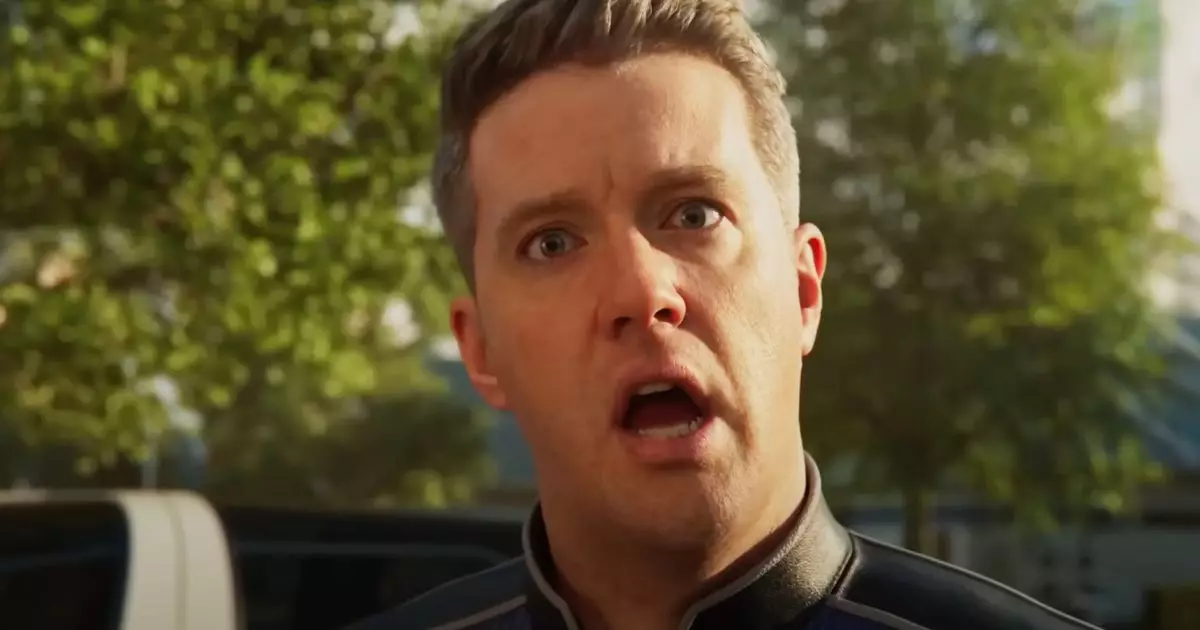Helldivers 2 thrusts players into a universe where survival hinges on relentless violence and overwhelming firepower. Developed by Arrowhead, this shooter doesn’t shy away from portraying war in its most brutal form. The latest in-game directive epitomizes this approach, demanding players to escalate their campaigns against enemy forces with a ruthless zeal. The game’s narrative, cloaked in satire and dark humor, exposes the grim reality of a society pushed to the brink—where citizen fears about invasion, dismemberment, and societal collapse dominate collective consciousness. While ostensibly a game, Helldivers 2 seems to mirror contemporary geopolitical dilemmas, albeit through a hyper-stylized, exaggerated sci-fi lens.
Instead of traditional storytelling, the game has moved toward what can only be described as a grotesque form of citizen mobilization. The order to eliminate millions of enemies, including massive leviathans and swarming bugs, mirrors genuine military overreach and the dehumanization often present in modern conflicts. It begs the question—are game developers genuinely trying to evoke awareness of the horrors of war or simply pandering to a gamer base hungry for high kill counts and explosive action? This question becomes more complex given the game’s satirical tone, which seemingly critiques our obsession with violence under the guise of heroic duty.
The Satirical Edge and Its Implication
A striking feature of Helldivers 2 is its relentless use of satire to critique both itself and real-world militarism. The aggressive language—such as “murder-death millions” and references to citizens’ fears—emphasizes the absurdity of turning conflict into a spectacle. The mention of “max security cities” like Fort Union, Fort Sanctuary, and Emeria sounds almost mockingly bland, underscoring how sterile and disconnected these war zones are from the human lives they supposedly protect.
The narrative framing suggests a state of societal crisis, compelling players to partake in mass slaughter to restore order—a disturbing reflection of modern conflicts where propaganda often masks brutal realities. The use of terms like “galaxy-brain PR campaign” exposes the game’s tongue-in-cheek critique of militaristic rhetoric used to justify violence. In essence, Helldivers 2 seems less about finding glory in combat and more a satirical mirror reflecting society’s penchant for turning tragedy into entertainment. Whether developers intentionally seek to inspire reflection or simply aim to increase engagement remains an open question, but the tone certainly isn’t subtle.
The Volume of Violence and Its Purpose
The game’s latest order to eliminate a staggering number of enemies—20 million Shriekers, over 12 million Impalers, and millions more of various foes—is not just a gameplay mechanic but a deliberate spectacle of excess. Such exaggerated figures serve to remind players of the overwhelming scope of modern conflicts, while simultaneously challenging their endurance and willingness to commit mass destruction.
This hyperbolic call to action raises questions about the underlying message: is this a glorification of violence, or is it a critique wrapped in absurdity? Helldivers 2, through its exaggerated kill counts, confronts players with the reality of war’s brutality—a brutal barrage that might leave many pondering the ethical implications of their actions. At the same time, this relentless grind risks desensitization, transforming war into a trivial task rather than a serious moral dilemma.
The Commercial and Cultural Layers
Amidst this chaos, Arrowhead introduces a more subtle layer of engagement: a reward for players who participated in an alternate reality game (ARG) called Station-81. The Ingress-81 cape, a vibrant purple accessory inscribed with cryptic “DCON DCON,” serves as a badge of honor for dedicated community members. This cross-media tie-in exemplifies how video games today are not isolated experiences but part of broader transmedia storytelling, blurring lines between gameplay, community participation, and marketing.
However, this strategy also raises questions. Are these rewards meaningful symbols of accomplishment or mere tokens designed to foster continued engagement? The ARG’s cryptic nature and in-game branding might serve as clever community-building devices, but they risk becoming superficial gestures that fuel player obsession rather than genuine narrative immersion.
The Broader Reflection: Are We Celebrating or Criticizing?
Ultimately, Helldivers 2 positions itself as a provocative social commentary wrapped in high-octane entertainment. Its satirical tone, colossal kill demands, and layered community interactions challenge players—and observers—to question what modern warfare, even in virtual form, really signifies. Is it a call to reflect on the horrors we critique or simply a marketing ploy to keep gamers hooked with ever-increasing stakes and rewards?
While some may see the game’s hyper-violent commands as an overdue satire or a parody of militarism, others might interpret it as a cynical uncritical celebration of violence. The truth likely resides somewhere in the overlap—an intentional provocation designed to entertain, reflect, and perhaps even disturb. In the end, Helldivers 2 is more than just a shooter; it’s a mirror held up to the face of our collective appetite for chaos and combat.

